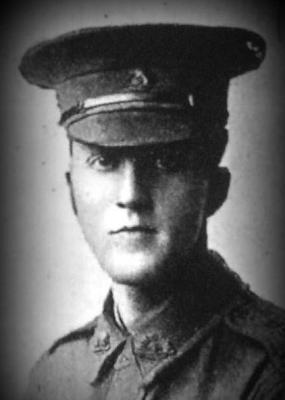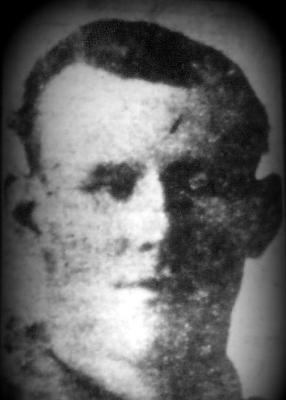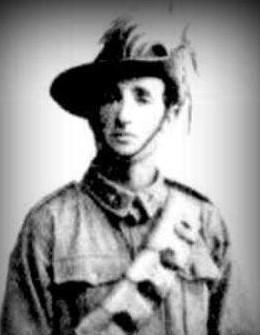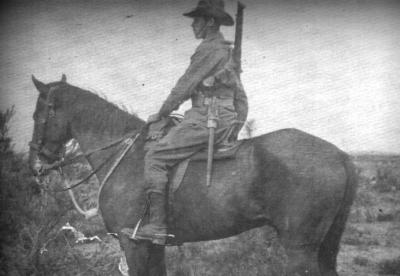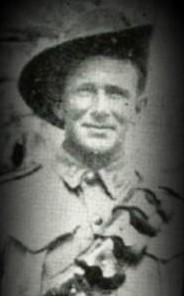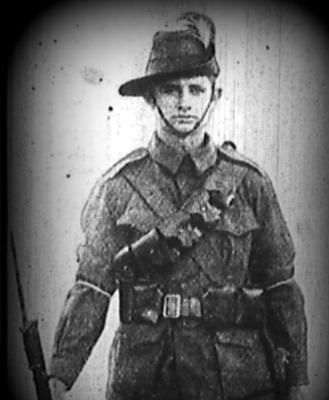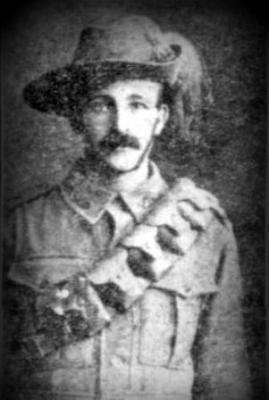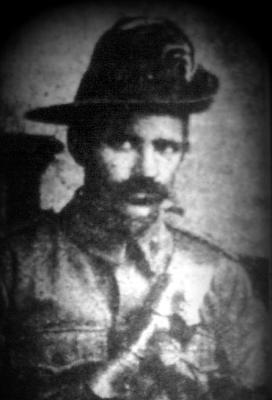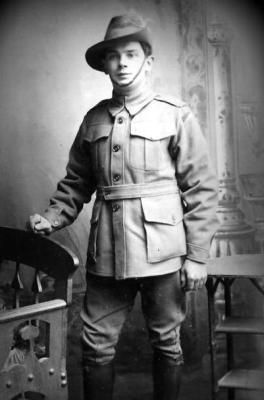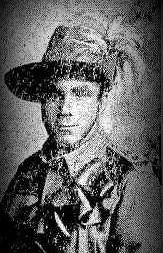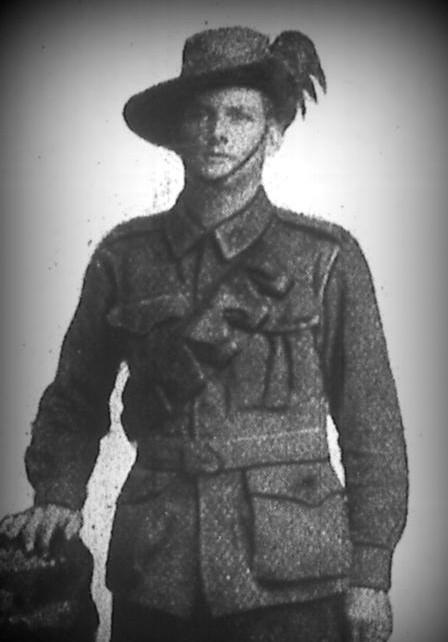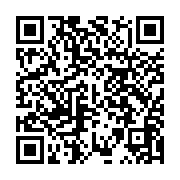World War 1, Australia, Western Australia, 829 SINCLAIR, 10 Light Horse
Photograph of 829 Trooper Cecil Hilary Sinclair from Toodyay, 3rd Reinforcements, enlisted 8 January 1915, killed in action at Raffa, 9 January 1917
10 Light Horse was raised as a squadron, then a regiment in October 1914.and formed part of the 3rd Light Horse Brigade in Egypt. The Regiment served dismounted in Gallipoli and fought at the charge at the Nek on 7 August 1915, and at Hill 60 on 29-30 August. The only Victoria Cross awarded to a Light Horseman recognised the valour of Lieutenant Hugo Throssell at Hill 60.
After Gallipoli the Regiment was bought up to strength to defended Egypt from the Ottoman Army advancing on the Suez Canal. Through 1916 they drove the Turks across the deserts of Sinai, participating in the battles of Romani and Magdhaba.
In 1917 as part of the Desert Column they advanced into Palestine and participated in the bloody battles to break the Gaza-Beersheba line and helped capture Jerusalem. They participated in the Es Salt Raid in May 1918. In August they were equipped with swords and retrained as cavalry. In this role they took part in the rout of the Ottoman army in the Jordan Valley, a campaign the light horse referred to as "The Great Ride". In September the 10th was the first formed regiment to enter Damascus.
Turkey surrendered on 30 October 1918. After the end of the war, the regiment saw action in putting down the Egyptian uprising of 1919. The Regiment was one of the few to return home as a formed unit.
Details
Details
Rafa, a former police post on the Egypt-Palestine border, was the scene of action between the Desert Column and Turkish forces on 9 January 1917. Rafa was one of two Turkish outposts guarding the Palestine frontier and when the other, Magdhaba, fell on 23 December 1916 it became the focus of British and dominion operations. The main Turkish defences were located on a bare hill about one and a half kilometres south of the town, and consisted of a strong network of trenches sited around a central redoubt. The attacking force consisting of the ANZAC Mounted Division, the Imperial Camel Corps, and the 5th Yeomanry surrounded Rafa before dawn but the subsequent attack made slow progress. By mid-afternoon the commander of the Desert Column, Lieutenant General Sir Phillip Chetwode, considered calling the operation off as reserves, ammunition and water were getting short; a definite decision to break-off was precipitated by the approach of two strong groups of Turkish reinforcements. The orders to the assaulting brigades were, however, ignored at unit level and both the cameleers and troopers of the New Zealand Mounted Rifles Brigade succeeded in overrunning the redoubts to their front. The Turkish defence then rapidly collapsed.
This photograph is part of the extensive Phil Sullivan 10th Light Horse Collection donated to the Army Museum in November 2023.
Open in Google Maps
Nearest geotagged records:
- World War 1, Australia, Western Australia, 1046 SWEETING, 10 Light Horse (0km away)
- World War 2, Middle East, ANDERSON, 2/11 Battalion, 1941 (0km away)
- World War 1, Australia, Western Australia, 1182 MacLAREN, 10 Light Horse (0km away)
- World War 1, Australia, Western Australia, 1998 BARRY, 10 Light Horse (0km away)
- World War 1, Australia, Western Australia, 1185 MOULTON, 10 Light Horse (0km away)
- World War 1, Australia, Western Australia, 405 FROST, 10 Light Horse (0km away)
- World War 1, Australia, Western Australia, 932 BELL, 10 Light Horse (0.01km away)
- World War 1, Australia, Western Australia, 1330 JONES, 10 Light Horse (0.01km away)
- World War 1, Middle East, Sinai, Romani, 5 Australian Light Horse, 1336 McGOWAN1917 (0.01km away)
- World War 1, Australia, Western Australia, 234 ANDREWS, 10 Light Horse (0.01km away)
Australian Army Museum of Western Australia
Australian Army Museum of Western Australia
Other items from Australian Army Museum of Western Australia
- World War 1, Australia, Western Australia, 851 ANDREWS, 10 Light Horse
- World War 1, Australia, Western Australia, 852 BAXTER, 10 Light Horse
- World War 1, Australia, Western Australia, 853 BEARD, 10 Light Horse
- World War 1, Australia, Western Australia, 856 BROWN, 10 Light Horse
- World War 1, Australia, Western Australia, 858 CAPORN, 10 Light Horse
- World War 1, Australia, Western Australia, 860 CHIPPER, 10 Light Horse
- World War 1, Australia, Western Australia, 861 CLARKE, 10 Light Horse
- World War 1, Australia, Western Australia, 862 CORSE, 10 Light Horse
- World War 1, Australia, Western Australia, 863 DAVIES, 10 Light Horse
- World War 1, Australia, Western Australia, 864 DAVIES, 10 Light Horse
- World War 1, Australia, Western Australia, 865 DAY, 10 Light Horse
- World War 1, Australia, Western Australia, 880 McLEAN, 10 Light Horse
